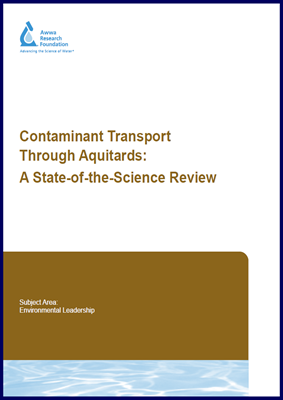This is Part One of a two-volume set that provides information for groundwater managers to gain an understanding of aquitards.
The book set provides technical guidance for evaluating aquitard integrity and predicting chemical and microbial transport to underlying aquifers. Aquifers and aquitards make up groundwater flow systems, with aquitards having much lower permeability than aquifers. Aquitards help protect underlying aquifers, and the water-supply wells completed in them, from contamination. The degree of this protection depends on many factors, including contaminant type, hydrogeologic setting, flow system dynamics, and local effects of groundwater pumping. Determination of aquitard integrity is an important aspect of groundwater management because without it, predictions of future groundwater quality cannot be reliable. This study developed two volumes that together meet The Water Research Foundation’s (formerly AwwaRF) objectives of understanding how aquitards affect contamination susceptibility.
Part One is Contaminant Transport Through Aquitards: A State of the Science Review. It summarizes the current knowledge of aquitard science.
Part Two is Contaminant Transport Through Aquitards: Technical Guidance for Aquitard Assessment. It provides guidance concerning investigations of aquitard integrity and summarizes specific technical methodologies.

